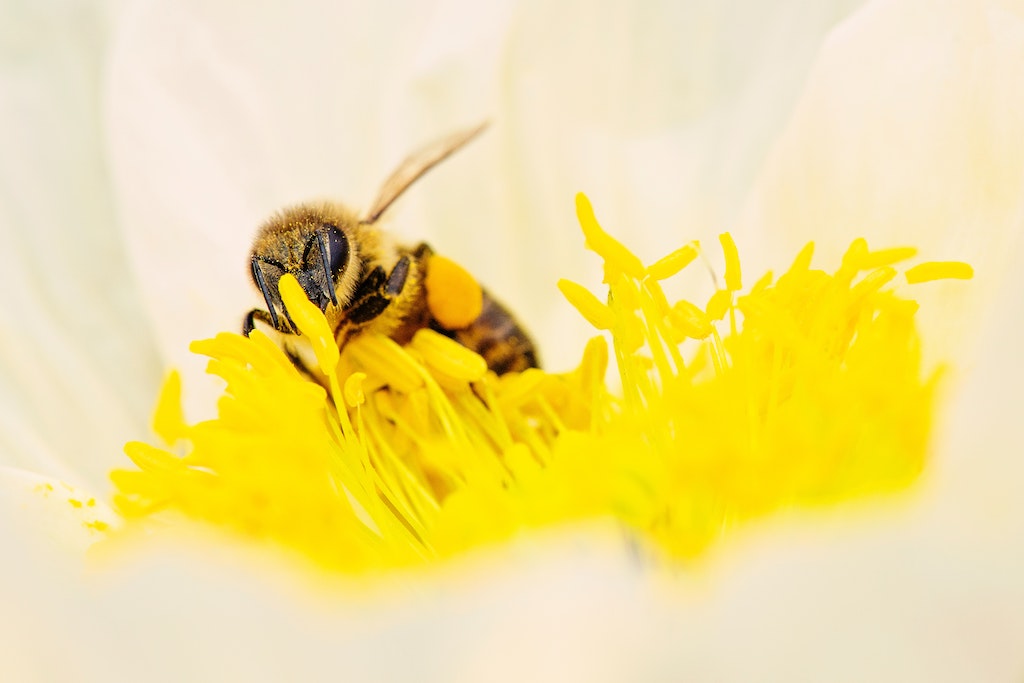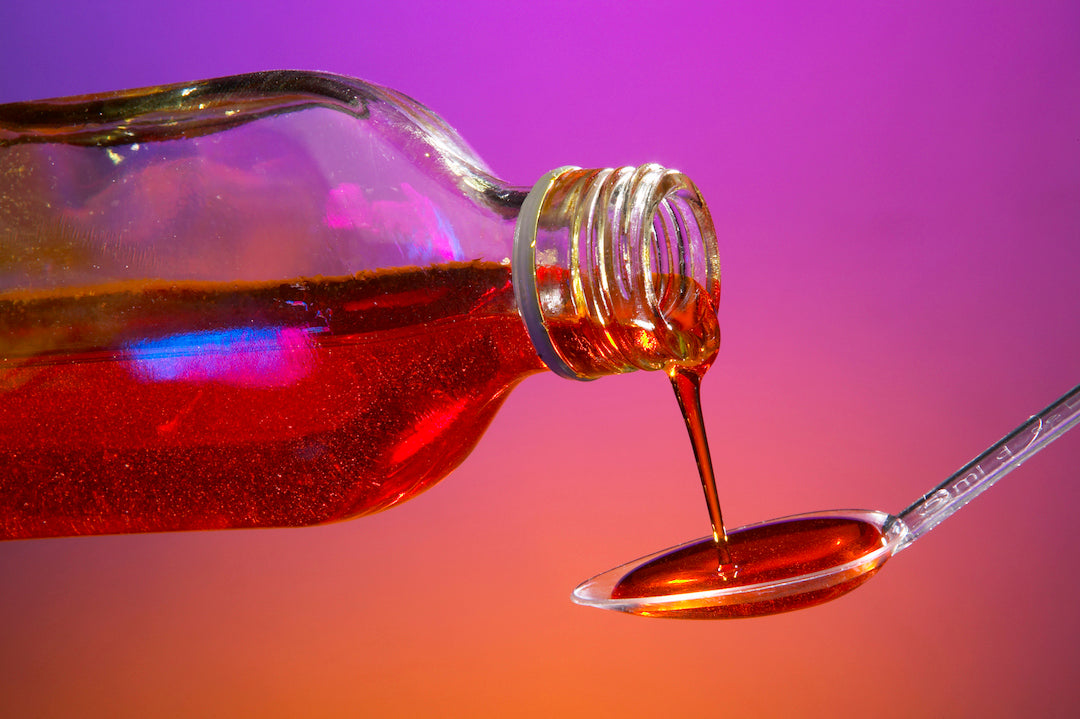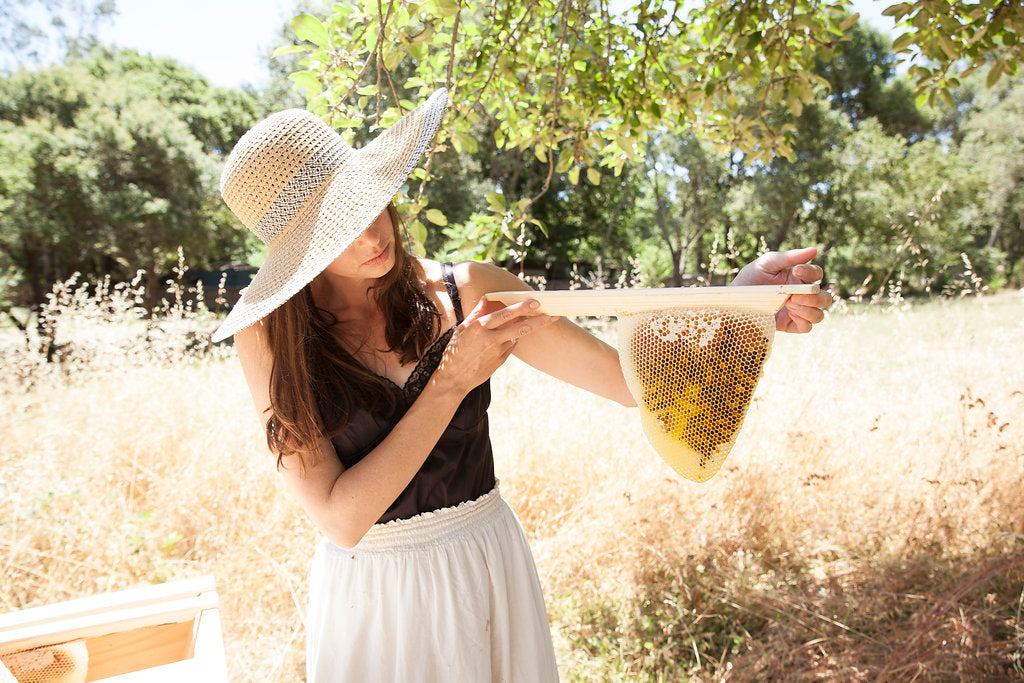We live in a pollination nation. Migratory pollination is the way the majority of beekeepers make money—over two-thirds of the US honey bee population gets trucked across the country from season to season. It's the only way for many beekeepers to survive. They are unable to compete with the dirt cheap prices of the global honey market, so they rent out their pollinating services.
Migratory pollination is a massive industry. Bees get trucked all across North America to pollinate out favorite foods—up to Washington for apple pollination, over to Maine for blueberries, and down to Florida for watermelons. But the annual California almond pollination is by far the largest pollination event in the world. Since California single-handedly grows more than 80 percent of the world’s almond supply, the almond industry requires A LOT of buzzing pollinators. In fact, in 2018 the California almond industry was estimated to need over 2 million hives to make sure all their trees got pollinated.
The annual hive migration for the California almond pollination season brings thousands of bees and beekeepers from across the country out to California, and it has been in the spotlight recently. In case you haven’t seen it, New York Times Magazine recently published a feature piece on the massive industry of California almond pollination entitled: The Superbowl of Beekeeping. It is worth a read and sheds a lot of light on the struggles facing both beekeepers and bees. Here are the main takeaways we think you should know about... 
Migratory pollination is not ideal for beekeepers... or bees.
A lot can go wrong in the almond groves with all those hives laying around. Hives can get mixed up from one beekeeper to another. Diseases can spread between hives more easily. Some beekeepers have even had hives stolen during the night, completely stripping them of their livelihoods and thousands of dollars of potential revenue.
On the bee side, there simply aren’t enough healthy bees to accommodate the still-growing almond industry, especially since a lot of hives come back from these trips malnourished and depleted. Bees aren’t designed for these big, stressful trips, especially on a regular basis. It really disturbs the hives. But bees don't need more stress. They have a lot going against them already.
Gene Brandi, former president of the American Beekeeping Federation, sums the problems facing honey bees in four Ps: “parasites, pathogens, pesticides and poor nutrition.” 
Bees are running out of food sources.
Let’s tackle poor nutrition first. If you were to go to a California almond grove, you’d see acres and acres of almond trees with beautiful white blossoms. But you might also notice a distinct lack of any other vegetation. Even the bases of the trees are simple mounds of bare soil, stripped of any additional vegetation. That’s because farmers are worried that any additional blossoms will distract bees from their job of pollinating the almonds. But research has shown that this simply isn’t the case. Neal Williams, professor and researcher at U.C. Davis, has spent a long time researching bees and has found that planting wildflowers improves pollination in two ways: “It attracts native pollinators, which create competition in managed honeybees, and the wildflowers vary bees’ nutritional intake.” Additional vegetation doesn’t distract honey bees from their work—it actually improves their performance.
Because so much wildflower and alfalfa-rich foraging land has disappeared in recent years due to drought and suburban sprawl, some beekeepers must actually feed their bees manufactured protein patties and supplement their diets to make up for the lack of forage. Others spray junk food sugar syrup in the hives to feed the bees. Neither of these bee feeds are as nutritious as a diet rich in diverse pollen sources and hive-made honey. In these situations, hives tend to become significantly less healthy.
Mites may be the biggest problem facing bees.
Parasites are another very serious threat to bee survival. The Varroa mite infests hives and sucks the blood of unlucky bees. Not only is this mite responsible for spreading viruses that can cause devastating deformities, but it also leaves the bees unable to navigate, wandering around in a zombie-like daze.
Climate change and warming temperatures are encouraging these mites to breed faster and wreck more havoc, but that's not the only issue. Bringing bees from all across the continent to pollinate the California almond crops puts two-thirds of the US honey bee population in one area and encourages the spread of disease. A devastating mite infestation could do some very serious damage to a large percentage of our precious pollinators. And that would spell enormous trouble for our food system.
The security of our global food system is at stake.
According to the article in New York Times Magazine, farmers aren’t optimistic about the state of the bees. They are preparing for the end. The Chinese are trying to use massive amounts of workers to take on the task of hand-pollinating crops. This involves the tedious process of taking a paintbrush and brushing the pollen from each blossom into a small pot, then blending all the pollen and going around to add pollen back in to each blossom. While bees have become experts at doing this over the last 100 million years, humans are highly inefficient. It's nearly an impossible task.
In contrast, some are pushing towards technologically-assisted pollination—robot bees. Walmart even filed a patent for a pollinating drone recently, but not many people are keen on putting the fate of ⅓ of our global food system on manufactured wings. Some almond growers have even invested in self-pollinating trees, but no one knows if these actually work. Bees from nearby fields could be doing a little pollination—there’s no way to be certain. Plus, the almonds taste horrible, so we haven’t out-scienced our agricultural reliance on bees just yet.
Humans need bees.
Believe it or not, we’ve relied on bees to pollinate our agriculture for millennia. Egyptians kept hives for harvesting honey and even floated them up and down the Nile to pollinate flowers. Refined apiculture techniques existed in prehistoric Greece, Israel, ancient China and Mayan civilizations. And when colonists came to the New World, they brought bees in straw hives.
Bees and human have existed side by side for thousands of years. But we are putting too much stress on the bees. We're asking them to travel great distances, to eat processed junk food, deal with toxic chemicals, and to single-handedly tend to the unsustainable global demand for delicate crops like almonds. It's too much stress for a little bee. We need to take better care of our pollinators.
That's why sustainability is such a priority for us at Beekeeper's Naturals. Do bees a favor and buy sustainable honey. And if you want to make sure more research is funneled in to saving these super important pollinators, consider supporting our charity partners here so they can continue to conduct crucial bee research.








